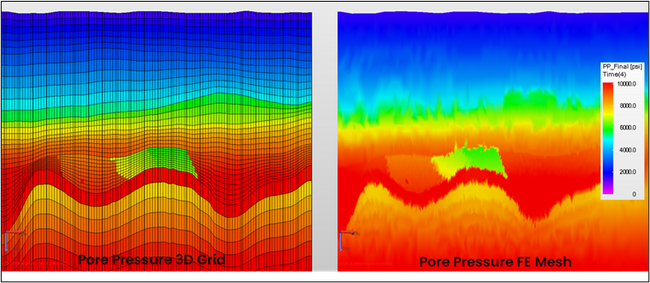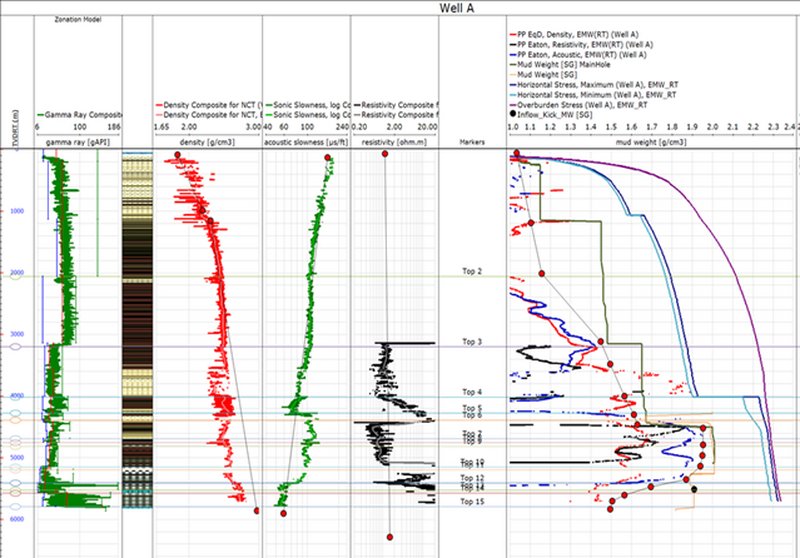Benefits
- Build more accurate and reliable 1D geomechanical models
- Solve complicated subsurface challenges with more detailed geomechanical insights
- Optimize drilling and completions plans to deliver a safe, high-integrity wellbore to target depth
Applications
- Well planning and designs
- Wellbore stability analysis
- Sand production prediction
- Hydraulic fracturing design
- Critically stressed fracture/fault analysis to measure fracture permeability and fault reactivation
- Reservoir compaction and surface subsidence analysis
- Static and dynamic 3D/ 4D geomechanical modeling
Overview
Pore pressure and fracture gradient prediction are essential for generating geomechanical solutions to your subsurface engineering challenges. GaffneyCline™ energy advisory has the expertise and modeling tools to accurately characterize pore pressures as inputs for your 1D geological models.
Accurately predict pressures for specific well conditions
Our expert teams develop pore pressure predictions that focus on computing fluid pressures along a well trajectory. We consider all possible pressure-generating mechanisms, including sub-compaction, lateral transfer, temperature, and chemical effects.
Our prediction methodology begins by using well-specific log data—including well pressure tests, logging-while-drilling data, and real-time pressure measurements—as inputs to our proprietary pore pressure modeling software. Integrating these data sets helps calibrate the pore pressure model and ensures high consistency and robustness.
The model gives you continuous logs of estimated pore pressures, fracture gradients, and overburden stresses with depth. The accurate pore pressure characterizations are critical inputs for computing the principal horizontal stress components in your 1D geomechanical model.
Optimize well construction planning with 3D pressure predictions
GaffneyCline energy advisory’s pore pressure predictions extend to 3D modeling for better drilling and completions decisions that improve wellbore stability.
Our 3D pore pressure predictions use calibrated parameters derived from the 1D modeling and a workflow based on seismic velocity volumes or specially reprocessed data, as required.
An essential part of our analysis is resolving uncertainties between predicted pore pressures and fracture gradients arising from compaction trends or variations in data interpretation. Our modeling experts use offset well data to calibrate the pore pressure/fracture gradient model. This calibration step ensures a robust model that reduces uncertainties in the predicted pore pressure.
With the calibration complete, we run the model to deliver 3D models of pore pressure, minimum/maximum horizontal stresses, and vertical stresses in the overburden. The estimated pore pressure profile at well locations is then compared to the interpreted pore pressure from the 1D analysis.
By examining the results of the 3D analysis along the planned well path, you can verify or adjust the designed casing setting depth and mud weight window for improved well stability while drilling.
Contact Baker Hughes to learn how GaffneyCline energy advisory’s pore pressure and fracture pressure prediction expertise can help minimize the risks and improve the delivery of your wells.
Figure 1. 1D Pore Pressure Prediction. An example of the deliverables from 1D geomechanical analysis showing the depth profile of the predicted pore pressure model.

An example of a 3D Pore Pressure Model derived from seismic data and later populated into a 3D grid for calibration with geological structures before being mapped on a tri-mesh for dynamic analysis.


